“The whole countryside was full of snakes sunning themselves along the roads and swimming in the ditches and newly flooded rice-fields… Out in Sesshu’s old garden behind the temple, the pond was starred with tiny twinkling water-lilies.”
Japanese Scrapbook, Glenn Shaw
As notorious for their eulogies of places as they are for dampening the spirits of travelers with dour descriptions and dark warnings about intemperate weather, indifferent hostels and, in the modern age, over-development and environmental degradation, guidebooks cannot always be trusted. The waters must be personally tested, the findings passed on to discerning friends and readers. “Imprisoned as it is within hills mostly bare, bleak in winter and glaring in summer,” runs the commentary in a 1920s copy of the Murray Guide to Japan, “Yamaguchi has little to detain the tourist.” First impressions of Japanese cities, of course, are seldom good. Little more than slapdash ensembles of prevailing tastes, functional and derivative, their components are easily superseded by newer forms, reinforcing a verdict of shoddy impermanence.
Yamaguchi city, though having its fair share of buildings in a style that could be termed post-war shabby, embodies a rare quality in the urban Japanese setting – good taste. The potpourri of misplaced designs, substandard materials, the rust-prone shop and café awnings, stained ferro-concrete, and sullen, space-starved apartments that characterize so much of “modern” Japan, are less evident here in a city thronged by lush hills visible from almost any spot. Once hills such as these are filled in or disfigured, of course, the spirit of a city like this, nourished by its green surroundings, will rapidly vanish. Mercifully, that has not happened. Significantly, the bullet train does not number Yamaguchi among its stops, sparing the city some of the “development” blight that has vulgarized so many Japanese cities.
Despite the city’s unassuming face, it retains a certain cultural authority. During the Sengoku era (1467-1573), Japan’s century of anarchy, much of the cultural and political life of the country shifted to the relative security of Yamaguchi, Nagasaki and Sakai. With Kyoto in ruins as a result of the Onin wars that raged around the capital in the late-fifteenth century, many of its literati, noblemen and their retinues sought refuge in Yamaguchi, bringing with them the sensibilities and tastes of the capital. Several of Yamaguchi’s temples and shrines date from this period and for the next century or so the city experienced something of a cultural renaissance.
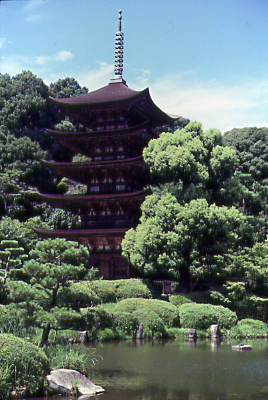 Were the Yamaguchi post office to be looking for an image to place on a commemorative stamp of their prefectural capital, they would probably choose the city’s magisterial five-story pagoda, built in the grounds of the Ruriko temple. Made from Japanese cypress, each roof a fraction steeper than the one below it, the pagoda, typical of the Muromachi–era Zen Kyoto style, is strikingly situated beside an ornamental pond graced by bushes and topiary, the effect only slightly marred by a twittering tape recording that gives you an account of the building’s history.
Were the Yamaguchi post office to be looking for an image to place on a commemorative stamp of their prefectural capital, they would probably choose the city’s magisterial five-story pagoda, built in the grounds of the Ruriko temple. Made from Japanese cypress, each roof a fraction steeper than the one below it, the pagoda, typical of the Muromachi–era Zen Kyoto style, is strikingly situated beside an ornamental pond graced by bushes and topiary, the effect only slightly marred by a twittering tape recording that gives you an account of the building’s history.
Japan’s first Christian missionary, the Basque priest Francis Xavier, is known to have stayed in Yamaguchi for two months on his way to an abortive audience with the emperor in Kyoto. Powerfully drawn to Japan, “this militant man,” as Nicolas Bouvier has written in his outstanding book The Japanese Chronicles, was “attracted by difficult countries, by a slightly melancholic moral rigor that he could sense without formulating… some indefinable quality, born of a tradition of which the West was ignorant.”
By the time Xavier arrived in Yamaguchi it was already a prosperous and refined city. Curious to know of the priest’s doctrine, the Ouchi family, aware that Xavier’s journey to Japan had begun after the completion of his mission in India, took Catholicism for some sort of new sect of Buddhism. The tolerant but shrewd Ouchi clan, their eyes less on baptism than the Portuguese cargoes from Macao, granted the Jesuit permission to preach in the manner of the bonzes. The uncompromising Xavier took to the streets of the city denouncing, among other things, infanticide, idolatry and sodomy (the latter a widespread practice at the time among the military and Buddhist clergy). Misunderstandings and offence, both real and imagined, were inevitable. Despite the subsequent persecution of Christians in Japan, Xavier and his mission are still remembered in Yamaguchi.
 Arriving here on foot, the late Alan Booth observed in his book The Roads to Sata that “the night was cool and the twin green towers of St Xavier’s Cathedral rose above the city like the upraised arms of a surrendering foe.” Sadly, the chapel, a memorial to Xavier’s mission, was destroyed in a fire in 1991 that took everything save its bell, now hanging from a frame in a cops of trees at a safe distance from the church. The building’s replacement, the gleaming St Francis Xavier Memorial Cathedral (Sabieru Kinen Kyokai), situated in Kameyama Park, is an altogether different affair. It’s a stridently modern structure that comprises a trigonal pyramid of silver and eggshell white, and is crowned with metallic towers, sculptures and a brace of suspended bells.
Arriving here on foot, the late Alan Booth observed in his book The Roads to Sata that “the night was cool and the twin green towers of St Xavier’s Cathedral rose above the city like the upraised arms of a surrendering foe.” Sadly, the chapel, a memorial to Xavier’s mission, was destroyed in a fire in 1991 that took everything save its bell, now hanging from a frame in a cops of trees at a safe distance from the church. The building’s replacement, the gleaming St Francis Xavier Memorial Cathedral (Sabieru Kinen Kyokai), situated in Kameyama Park, is an altogether different affair. It’s a stridently modern structure that comprises a trigonal pyramid of silver and eggshell white, and is crowned with metallic towers, sculptures and a brace of suspended bells.
Gone are the restrained stain glass windows, musty pews, old candlestick holders and cozy gloom that must have given it a slightly popish atmosphere. In their place is an aesthetic roughly corresponding to a supermarket Xmas card. Large stained glass plates in its cool interior and colored jars of candles add to the effect of a slightly dimmed, café gallery. Its priests, a young, efficient breed dressed in what look like suzerains designed by Armani, dispense the paraphernalia of the mass with the sanitary professionalism of waiters in a fashionable wine bar. The building itself, its two white towers easily mistaken for part of a fire station, is not all bad, however. The design is reminiscent of Tange Kenzo’s 1964 St Mary’s Cathedral in Mejirodai, a highly original concept similarly covered in stainless steel, a reflective device said to symbolize the light of Christ.
Besides the Xavier Church and the various statues and memorial plaques to the priest that dignify parks and other municipal spaces, there are also a number of contemporary European additions. One such place is La Francesca, a hotel eatery in a hacienda style – orange, umber and pergola – that I initially took for one of Japan’s newer, expressway family restaurants. As it turned out, however, the establishment offers a very decent Italian menu. There are also boutiques with names like Plage Fin and, in a back lane between the library and the Akarenga Creative complex, Au Quartier Latin, a café where you can sip Pernod or order Perrier water with a twist of lime in an arty, but affordable left bank setting.
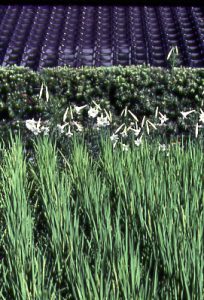
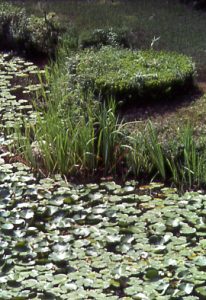 A kilometer or so northeast of the chapel, the Sesshu-tei must be one of the most serene gardens in Japan, a place free of the recorded messages often deemed necessary to enjoy a historical or cultural experience. Returning from China, where he had gone to study the arts, master painter and priest Sesshu was asked to design a traditional Japanese garden in the temple grounds here. The result, an arrangement of stones, rocks, lawn and lily pad pond, is best viewed in its intended entirety from the broad wooden veranda at the rear of the temple. Paths run on four sides of a central arrangement: one is located beneath the viewing veranda, the other rises up into woodland that either masks off or reveals glimpses of the design from varied angles.
A kilometer or so northeast of the chapel, the Sesshu-tei must be one of the most serene gardens in Japan, a place free of the recorded messages often deemed necessary to enjoy a historical or cultural experience. Returning from China, where he had gone to study the arts, master painter and priest Sesshu was asked to design a traditional Japanese garden in the temple grounds here. The result, an arrangement of stones, rocks, lawn and lily pad pond, is best viewed in its intended entirety from the broad wooden veranda at the rear of the temple. Paths run on four sides of a central arrangement: one is located beneath the viewing veranda, the other rises up into woodland that either masks off or reveals glimpses of the design from varied angles.
Although the garden attempts to concentrate the mind by removing the distraction of too much color, it is nonetheless lush and green in summer with yellow lilies in its pond, creating an impression more of a paradise garden than a dry landscape one. In Western Japan’s humid summers and erosive winters, gardens, like wooden posts and celadon tiles, soon acquire a patina of antiquity. The visitor, after an absence of several years, will find the garden little altered. Winter perhaps, is the ideal season to view this garden, its grasses and leafy backdrop scrapped off, its Zen bones poking through the surface, the components of the garden closer, we suppose, to Sesshu’s original concept.
Transected by the only moderately busy Route 9, it is possible to preserve some of the serenity of Seishu’s garden by following a path along the Ichinosaka River as it makes a sinuous course back to the town center. Crossed by pedestrian bridges, the banks of the stream are lined with water-reeds and azaleas, and are popular in spring when the cherry trees are in full blossom. During summer months, the banks welcome fireflies called Genji and Heike-botaru – named according to their respective sizes – that enhance the illusion of timeless traditions and cycles.
Although one can amble around Yamaguchi with relative ease, visitors are well advised to take advantage of a bicycle if they wish to make sightseeing all the more leisurely. On my final afternoon, pedaling around in circles looking for the carefully concealed Sansui-en, an exquisite Edo-period ryokan with a fine landscaped garden, I stopped another cyclist to ask the way. Whether all Japanese workers carry business cards in their weekend pants is uncertain, but Mr Endo – civil engineer, home Setagaya-ku, Tokyo, as his meishi described him – certainly did; a veritable wad of them. Back to visit parents in his hometown, Endo-san had never heard of the illustrious inn, but gallantly offered to find it for me.
As we cycled along, I gave what I thought was a brief tribute to his town: Yamaguchi is a place where old houses outnumber newer alternatives, well-tended gardens boast rocks, cycads and pines, elderly folk are courteous, and the rural tendrils of this prefecture seem to penetrate the urban. Endo-san seemed increasingly uncomfortable with my assessment of his hometown as a sleepy backwater, unaware that the civilizing graces I was eagerly enumerating constituted its greatest attraction.
“Every year I come back,” he offered hopefully, “it’s a different place. More modern.”
TRAVEL INFORMATION
The JR Yamaguchi line runs between Ogori, a bullet train station, and the city. There are also regular buses. There are regular buses from Hagi and Tsuwano. Yamaguchi Ube Airport lies 40 kilometers south of Yamaguchi. The second floor of Yamaguchi Station has a good tourist information center, with maps and leaflets in English. The rates at Taiyo-do (tel: 083-922-0897) are very reasonable, and the ryokan, with an entrance on Komeya-cho arcade, is very central. Yamaguchi Kanko Hotel (tel: 083-922-0356) may look a little tacky but the service is good, the rooms clean and the location on Ekimae St handy. Visitors to Yamaguchi can also avail themselves of the baths at nearby Yuma Ones. The city offers a rare chance to ride an old 1937 steam train, the SL Yamaguchi-go, which operates on weekends between mid-March and November. There are two bicycle rental shops just outside the station. The Rough Guide to Japan is in a league of its own when it comes to finding relevant published information about this region. Alan Booth’s superb Looking for the Lost is published by Kodansha.
Story & Photos by Stephen Mansfield From J SELECT Magazine, July 2006

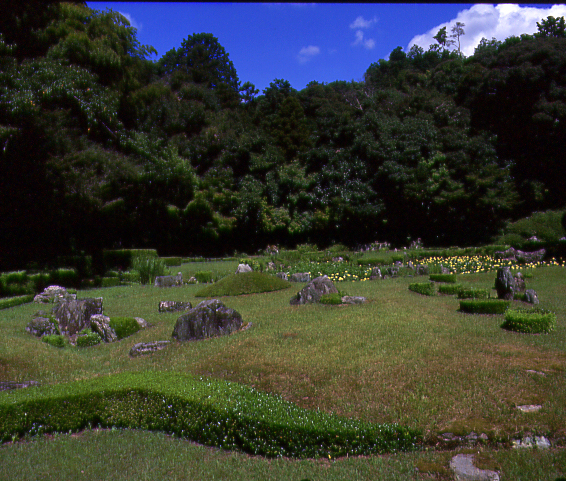


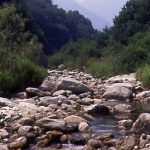
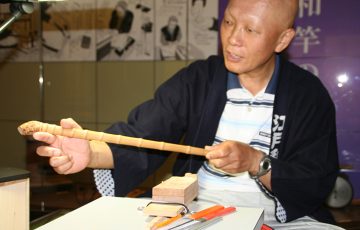
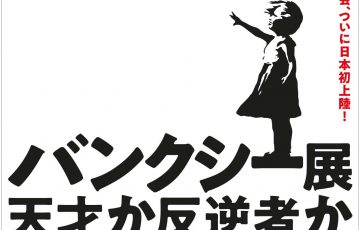
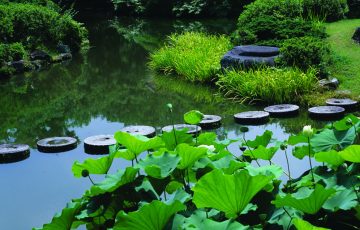
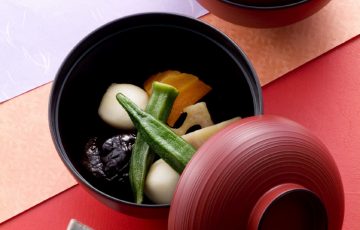


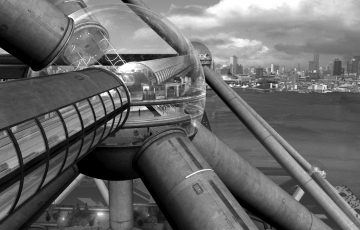
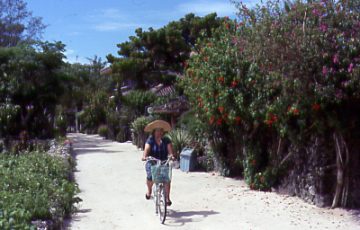


Recent Comments